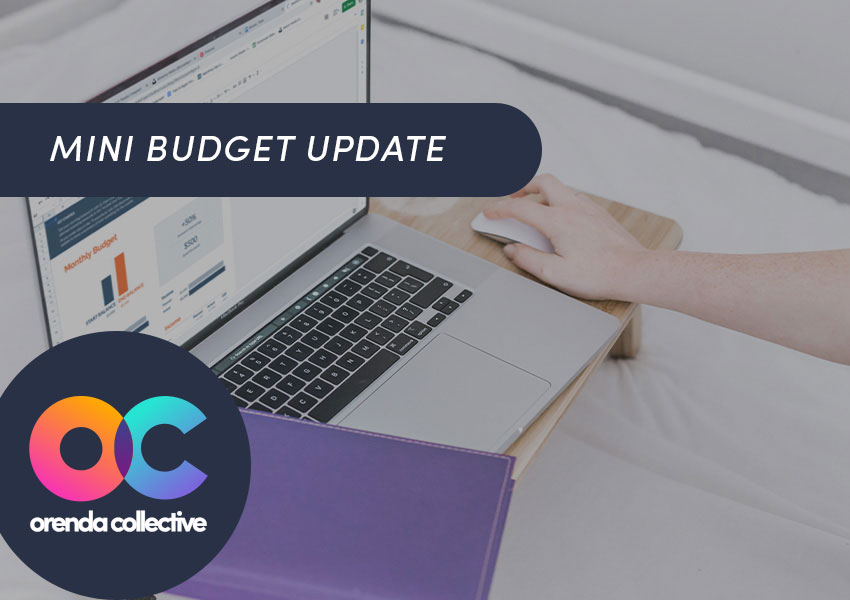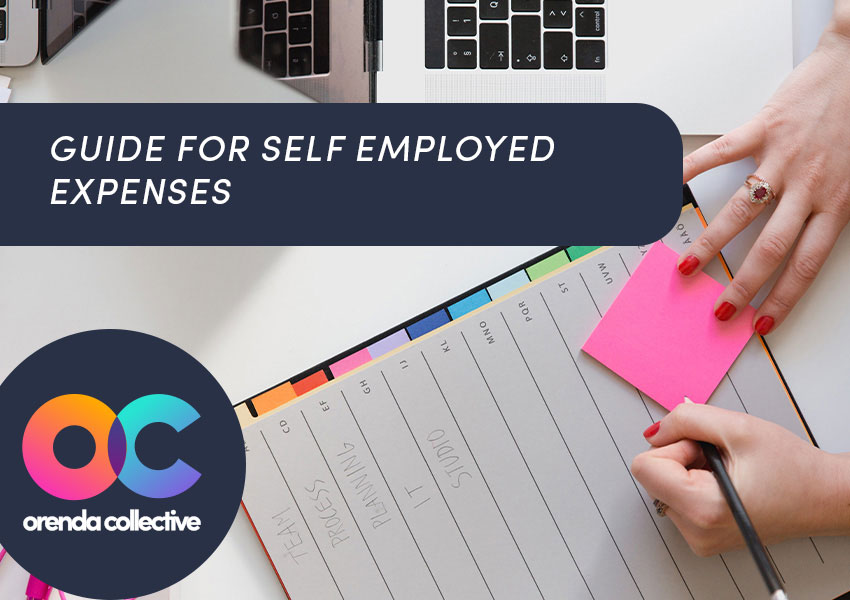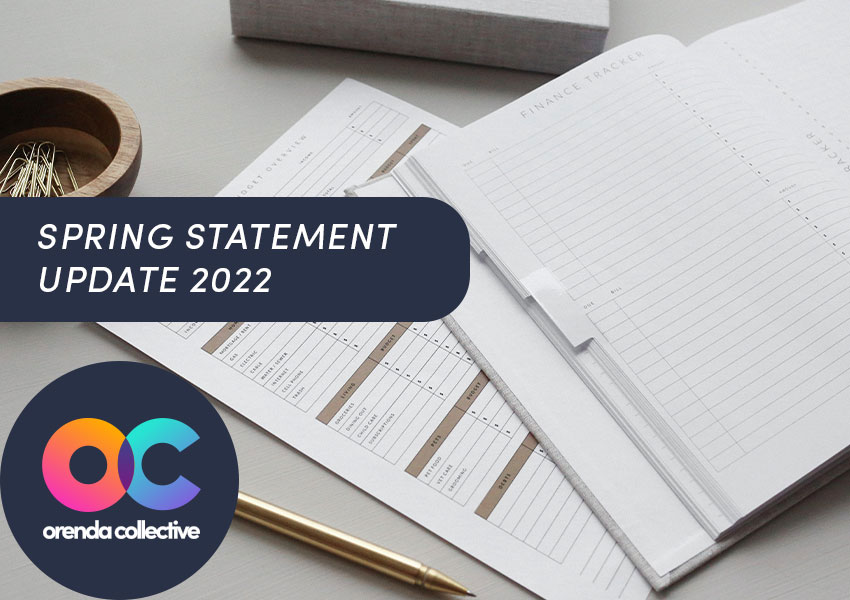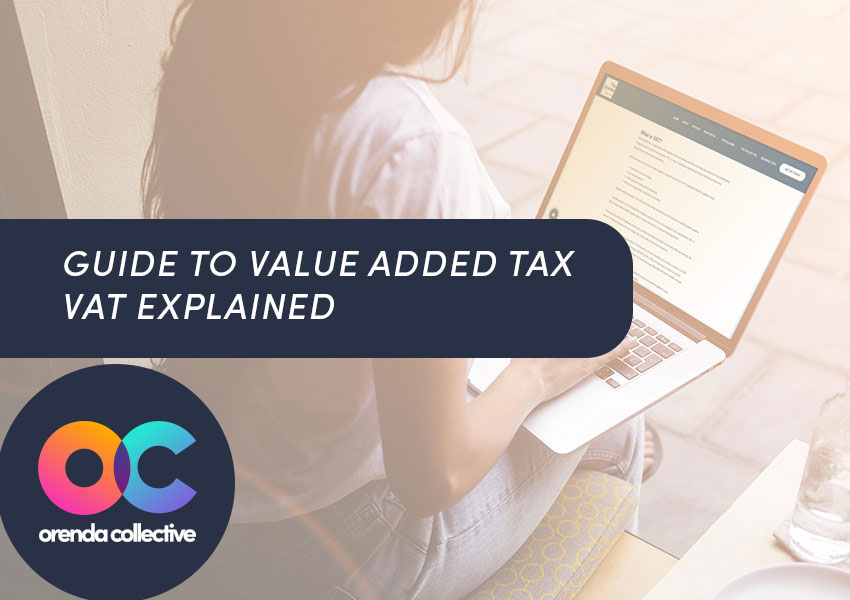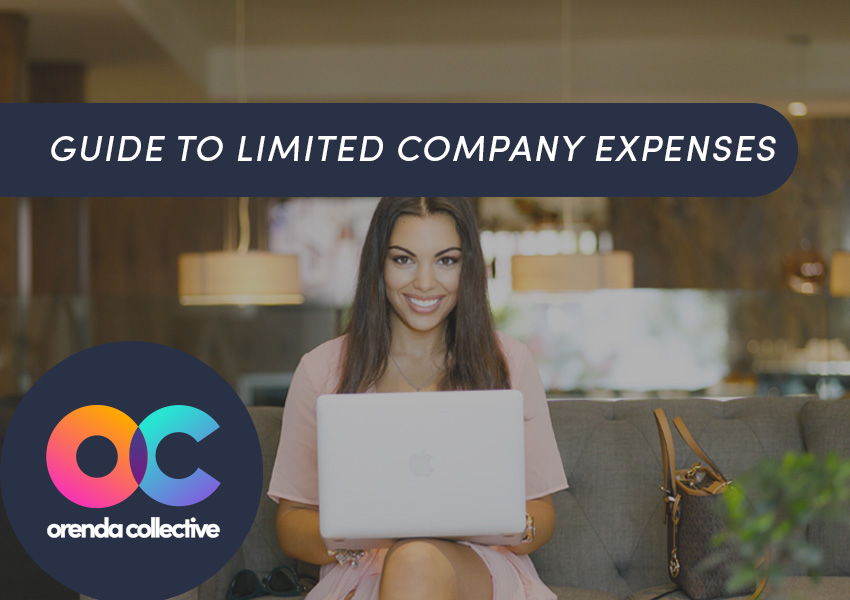
When you operate a limited company, the amount of corporation tax your company pays is based on the profits chargeable to corporation tax.
Profit means company income less company expenses.
Therefore by reducing your company profit, you are lowering the amount that the company corporation tax is calculated upon.
Allowable expenses are a perfectly legal way you can pay less tax! But it is very important that you keep track of your limited company income and expenditure, as well as keeping copies of all your receipts and invoices.
It won’t be a surprise that HMRC set out strict rules about which expenses you can claim for (allowable expenses) and which expenses you cannot claim for (disallowable expenses).
Is there a general rule when it comes to limited company expenses?
The overarching rule that you should follow is that every expense you claim on your tax return must be wholly, exclusively and necessarily incurred for business purposes.
However, HMRC rules can be complex, and are often based on concepts such as ‘fairness’ and ‘reasonableness’ of expenses claimed.
In this guide, we’ll be going through all the main types of HMRC approved business expenses you can claim as a limited company for tax purposes.
Allowable business expenses reduce the amount of profit on which limited companies pay corporation tax. So, more allowable expenses means less taxable profit and less tax to pay.
But as always, you want to keep on HMRC’s good side, so you need to make sure you only claim for expenses that are on HMRC’s approved list.
Failing to do so can result in investigations, penalties, and interest.
To account for your expenses properly, you need to keep accurate records of your income and expenditure, do bear in mind that you’re legally bound to keep these records for at least six years.
Maintaining a limited company bank account
It is a requirement that Limited companies have a bank account set up in the Limited company name (as opposed to your personal name).
Where possible we recommended that all company transactions are paid into and out of this bank account for the best record keeping practices.
Company Invoices & Expenses
You should ensure that invoices, bills, receipts etc. are made out to/in the Limited company name as opposed to your own name.
In the event that either you as director or one of your employees has to pay for business expenses personally you should ensure that the receipts/bills are obtained and kept on record and that an expense claim is completed to reimburse you or the employee for the expenditure.
What is an allowable expense?
Allowable expenses are costs that you can claim against the company profits and therefore tax bill.
Generally speaking, most of the things that you pay for as a direct result of being in business are an allowable expense because you wouldn’t incur them if you were not in business.
What is a disallowable expense?
There are certain expenses, that even though you may pay for as a result of being in business, you cannot claim against your taxes.
Allowable vs Disallowable expenses for limited companies
| Allowable | Disallowable |
| Wages & National insurance costs of employees & Directors (1) | HMRC fines & penalties |
| Freelancers & subcontractors (2) | Parking fines |
| Pension costs (3) | Dividends (1) |
| Stock and raw materials (4) | Depreciation (20) |
| Home office costs (5) | Entertaining & gifts (21) |
| Rent, utilities & office maintenance (6) | Non-safety or non-uniform clothing (12) |
| Printing, postage & stationary | General food (8) |
| Advertising & marketing | Travel between your home and normal work place (8) |
| Subscriptions | Personal expenses such as gym memberships,Spotify, Netflix etc. |
| Training courses (7) | Personal accounting fees e.g. for a self-assessment tax return |
Business travel (8)
|
|
| Business vehicle (if vehicle legally owned by the company) (9) | |
| Equipment & Tools (10) | |
| Website, hosting & email | |
| Telephone & Internet (11) | |
| Uniforms & safety clothes (12) | |
| Legal & accounting fees relating to the company only | |
| Bad debts | |
| Bank credit card and other financial charges (13) | |
| Coaches & Consultants (14) | |
| Charitable donations (15) | |
| Christmas Party & staff events (16) | |
| Gifts and trivial benefits (17) | |
| Pre-trade expenses (18) | |
| Medical costs (19) |
Some of the expenditure in the table above requires a little more explanation and we have therefore included more detail below for specific expense categories.
Wages & National Insurance (1)
If you pay employees or directors in your business, the cost of their salary or wage can be claimed against your profits, along with employers national insurance and pension contributions.
Depending on your personal circumstances we are likely to advise you to operate a payroll even if you are the only employee of the business.
This is because generally the most tax efficient way to extract money from a limited company as a director and shareholder is through a combination of low salary and dividends.
The salary is set at a suitably low threshold that avoids you having to pay income tax personally on the amount, but also entitles you to benefits such as entitlement to statutory maternity pay, a state pensionable year and corporation tax relief on the salary cost.
The optimum salary threshold is usually not enough to live on, and therefore the rest of the funds you need for personal use is extracted as a dividend.
It is important to note that dividends are not tax deductible when computing company profits.
So for example, if your company had £50,000 of income, £10,000 of overheads, you were paid and £11,000 salary and dividends of £5,000, your company taxable profits would be £29,000 and not £24,000.
Freelancers & Subcontractors (2)
You can claim the costs of any freelancers or subcontractors that you pay to support your business.
However, there are rules around whether an individual performing services is considered employed or self-employed for tax, and we encourage you to review this for each freelancer or subcontractor.
HMRC have created a useful tool that allows you to answer questions based on how your business operates with that individual, in order to determine their employment status that may be useful.
The tool can be found here.
Pension payments through your limited company (3)
Once your company has set up a contract with a pension provider it can make payments into your pension and receive 100% tax relief as an allowable business expense.
In the 2023/24 tax year, there’s a limit of £60,000 (2022/23: £40,000) on how much you can contribute free of tax to a pension scheme either through your company or personally.
Please speak to your financial advisor and us for more information so we can advise in more detail on this matter.
Stock and Raw Materials (4)
If you are a product based business you will incur costs for purchasing stock items, and you may also incur costs for items required to make your product.
For example if you are a clothing business you will need to buy the clothing item (stock) and then you may need to purchase some dye (raw materials) to create your bespoke clothing item that you then sell in your business.
Home office (5)
If you work from home then you may be eligible to claim for some of your home expenses.
HMRC allow for £6 per week or £26 monthly to be paid to employees of the business to cover their additional working from home costs.
Rent, utilities & office maintenance (6)
If you choose to rent business premises, then you can claim:
- Rent/lease payments,
- Business and water rates,
- Lighting,
- Heating,
- Property and contents insurance.
Training courses (7)
Where a Limited Company provides training to employees or directors corporation tax relief via an allowable expense is generally available.
This is provided the training expenditure meets the basic requirement of being incurred wholly, exclusively and necessarily for the purposes of trade.
In most cases the company will be providing the training to enable the employee or director to better perform their duties or role and to advance the companies trade, and therefore it is treated as an allowable expense.
Examples of this could be, a marketing course, further training on your skill or expertise and sales training.
Be careful though if the training cost is not work related as this may not attract corporation tax relief and can create an employee benefit that is required to be reported on a P11d form.
Business Travel (8)
Claiming travel on your taxes can be a complex area.
In general you can claim travel away from your normal place of work for things like:
- Visiting clients or suppliers for new or existing business
- Overnight business stays
- Travel to training courses that qualify for allowable expenses
Travel outside your normal business commute is known as irregular travel.
For your business travel to be an allowable expense, each journey you undertake must be:
- An irregular journey, outside your normal commute;
- Fully business related and not contain any element of personal travel (also known as a dual purpose trip);
- Not related to a regular contract/agreement with a client.
What is a dual Purpose Trip?
A dual-purpose trip is one that has a personal element to it. For example, where as part of a work trip you sight-see, take your family/friend, or even just stop for a spot of shopping.
Consequently your whole trip could be deemed disallowable.
You should keep entirely separate receipts and expenses for the business side of your trip and book anything personal, family or friends related completely separate.
Travel to your normal place of work:
You cannot claim for travel to and from your normal place or places of work e.g. to your office, studio, or co-working space. It must be only travel to a temporary work place.
A temporary workplace is defined by HMRC as one which you attend that:
- For a limited time only, like a one-off meeting;
- Meets the “40% rule” – that means a workplace that you spend less than 40% of your working time at;
- Is for less than 24 months.
So watch out, if you regularly travel to the same place you may not be able to claim the travel expenses.
Travel costs for irregular journeys that meet the above criteria could include:
Mileage OR vehicle costs
- Trains
- Flights
- Buses
- Parking
- Taxis
- Hotels
- Subsistence (food)
Taxis
Be aware that HMRC take a dim view of excessive use of taxis, particularly if they appear unnecessary – i.e. it was a very short journey.
Overnight stays
If your business travel includes an overnight stay, then you can claim the cost of this as part of your travel.
You can also claim for food & drink that you had to pay for as part of your irregular journey.
You can claim for:
- The cost of travel to the location;
- Accommodation for your overnight stay;
- A reasonable amount for an evening meal and breakfast
HMRC will likely question any excessive claims for expensive hotels or lavish over the top dinners.
So, sorry, but staying at the fancy hotel and having fine dining is probably not going to be acceptable!
Mileage or Business Vehicle (9)
If you use your car for business purposes you will need to decide which is the most tax efficient method for claiming relief.
This will most likely depend on how much travel you do and what car you have.
The main ways you can claim for using your car for business reasons are:
- Claim business mileage at the rate set by HMRC;
- Buy a car through your company (i.e. the company owns the car) and claim for the car running costs
Mileage
The mileage rates set by HMRC is set at a rate per mile that contributes to the cost of wear and tear on a vehicle as well as fuel, MOT and servicing.
Other car expenses are not tax deductibles such as MOT, repairs and fuel.
Current rates:
- 45 pence per mile for cars and goods vehicles on the first 10,000 miles travelled (25 pence over 10,000 miles)
- 24 pence per mile for motorcycles
- 4p per mile for fully electric cars
You need to keep a record of all your business journeys, the key things to include are:
- Date of the journey
- Purpose of the journey e.g. to visit a client
- Start location
- End location
- Number of miles
A template mileage log can be found in our company bookkeeping spreadsheet.
To calculate the amount you can claim you apply the rates applicable to the number of miles.
For example if you travelled 11,000 miles for business you would claim:
First 10,000 at 45p per mile = £4,500 plus 1000 at 25p per mile = £250, therefore total claim £4,750.
Business Vehicle
Buying a car through your company may be tax efficient depending on your line of work. However, the way you’ll get tax relief will depend on how you pay for the car and its CO2 emissions.
You will also needed to consider the added tax implications that arise if the car also has personal use.
This is because using the car personally creates a P11d benefit, and both the company and you have to pay tax each year, on the deemed benefit of personal use.
Generally speaking, it’s not usually tax efficient to put a car, that you will use personally through the company in this way, unless it’s an electric car.
This is because normal cars attract a higher rate of P11d tax, which results in the tax savings of owning the car in the company, being wiped out.
Equipment, tools & other assets (10)
You may need to buy items such as:
- Laptops
- Headphones
- Tech items
- Office furniture
- Tools
- Equipment
- Vans
- Cars
Provided they are used for the business you will likely get tax relief for the items. Though depending on the type of purchase it may be that the way you claim is through capital allowances as opposed to just normal expenditure.
Capital allowances
Capital allowances are a type of tax relief which businesses can claim when they invest in long-term assets.
Sometimes known as fixed assets (or capital assets), these are assets which you can reasonably expect to stay in use by the business for longer than 12 months.
Claiming capital allowances means you can deduct part or all of the asset’s value from your profits.
There are different types of capital allowances, with different criteria. In some cases, claiming them means a business can write off the entire cost of buying an asset in one year, making a significant dent in its tax bill.
There are three main categories of capital allowances, which you must use depending on the type of assets you have bought.
These three categories exclude cars, which are treated slightly differently.
Here’s how much businesses can claim as a percentage of the cost of the capital asset they have purchased on each tax return:
Main Rate Pool – 18%
- This pool includes things like plant & machinery, equipment and furniture.
Special Rate Pool – 8%
This is a unique category and refers to purchases which are:
- parts of a building considered integral – known as ‘integral features’;
- items with a long life of over 25 years;
- thermal insulation of buildings;
Single Asset Pool – 18% or 8%
- A business can create a single asset pool where an asset that has a really short life but you cannot include in this pool any cars, special rate items (number 2 above) or anything that you use for non-business reasons.
Business claim for HMRC capital allowances on cars based on CO2 emissions of the vehicle and whether it is new or second hand. Refer to business vehicle above for more details.
Annual Investment allowance
Certain assets purchased qualify for the annual investment allowance which allows for the cost of the asset to be fully deducted in the year of purchase rather than over the life of the asset.
The Annual Investment Allowance (AIA) is a tax break created by HMRC to encourage spending by businesses.
It permits businesses to deduct the full value of certain ‘qualifying assets‘ against their profits before tax in the year they make the purchase, up to a certain limit (currently £1m).
Capital allowances can be complex and we will prepare the required calculations as part of completing your tax return.
Telephone & Internet (11)
For mobile phones, provided the contract is between the company and the mobile phone provider, the company can claim all costs as an allowable expense.
If you make a claim for business only calls made on your personal mobile or landline phone bill, this is an allowable expense provided you can prove it was a business call.
It’s increasingly difficult to separate the cost of business calls, given the way mobile (and many landline) operators package call costs (e.g. ‘up to 2,000 free monthly minutes’).
If you can’t separate the business element from your personal use of your mobile phone, you cannot make a claim, due to the duality of purpose rules, as any business calls you make incur no extra cost on top of the tariff you already pay for personal calls.
If you start to carry out some of your work from home, using your residential broadband, you cannot make a claim if the broadband was already in place, unless you can clearly split the business from the personal element. Having two broadband lines could show one line is 100% for business.
If you have no broadband contract at home and need internet access to carry out your business, the costs can be reclaimed from your company, and no ‘benefit in kind’ charge arises.
However, it’s worth remembering HMRC are likely to challenge the fact that you have no broadband at home given how reliant on the internet we are.
Uniform & safety clothing (12)
You can claim the costs of branded uniforms that you have for your business, for example if you get t-shirts or jumpers with your logo printed on it.
However, you cannot claim non-branded uniforms unless they are for safety reasons, for example, steal toe cap boots etc.
Dual-use clothing, like business suits, workout gear, general outfits etc. are not an allowable expense.
The general rule is if you could include anything you wear for work as part of your ‘everyday wardrobe’, even if you choose not to wear them outside of work, these items cannot be claimed as expenses.
That applies even if you have to wear a suit or certain type of clothing to work, you cannot claim the cost of these outfits against your taxes.
Bank, credit card and other financial charges (13)
Many types of bank charges can be claimed as an allowable business expense, though they must be for accounts or cards in the name of the business.
You can claim business costs for:
- bank, overdraft and credit card charges the interest on business and bank loans (but not repayments of the capital or loan amount)
- hire purchase interest
- leasing payments
You cannot claim for repayments of personal loans, overdrafts or finance arrangements.
Coaches & consultants (14)
You can claim the cost of a coach or consultant provided the coach or consultant is providing services only related to your business.
For example you might work with a marketing consultant to increase your brand awareness and customer enquiries or similarly you might work with a business coach on streamlining your operational functions or financial position.
These would be examples of allowable expenditure. Be careful though, as life coaching or more general coaching would be considered be not allowable for tax purposes.
Charitable donations as a limited company (15)
Your limited company pays less Corporation Tax when it gives the following to a UK registered charity:
- Money
- Equipment or trading stock (items your company makes or sells)
- Land / property / shares in another company (shares in your own company don’t qualify)
- Employees (on secondment)
- Sponsorship payments
Christmas party and staff event expenses through your limited company (16)
Your company can host an annual event – most commonly a Christmas party – as a tax-free benefit, providing you meet certain conditions.
Your employees may invite a partner but you must not exceed an expenditure of £150 per head (including VAT). The event must cater mostly for staff. For example, expenses for one director and a plus one would be acceptable and would give you a budget of £300.
However, if those attending are not mostly employees then it would be difficult to argue the event’s main purpose is to entertain staff.
Note that the £150 amount is an annual limit and can cover multiple events for staff.
Be careful though, if the £150 annual limit is breached the whole event cost becomes a taxable employee benefit and must be declared on a P11d form and the appropriate taxes paid.
Gifts and trivial benefits from your limited company (17)
You don’t have to pay tax on a gift or benefit for your employee or director if all of the following apply:
- it cost you £50 or less to provide
- it isn’t cash or a cash voucher
- it isn’t a reward for their work or performance
- It isn’t in the terms of their contract.
This is known as a ‘trivial benefit’. Please note for directors, the amount cannot exceed £300 annually e.g. 6 x £50 = £300.
Assuming all the above criteria are met you don’t need to pay tax or National Insurance through P11d benefits or let HMRC know.
You would have to pay tax via a P11d form on any gifts or benefits that don’t meet all these criteria, so be careful not exceed these limits.
Pre-trading expenses (18)
Pre-trade expenses are costs you incur before you start trading. You can usually treat these as if the expenses were incurred on the first day you began trading, so they will be an allowable business expense in your first set of accounts.
The relief is only available if:
- It was incurred in the period 7 years before commencement of trade
- If it would be allowable if incurred after trading commenced (e.g. entertaining would not be allowed as a pre trading expense)
Medical expenses (physio, chiropractor, massages, doctors’ fees etc) (19)
Medical benefits provided to employees is an allowable expense in the Limited Company. However, the provision of medical (and all other benefits) are subject to employee benefit in kind tax.
The employee must pay personal tax on it and your company will be liable to National Insurance Contributions at 13.8%.
This generally means for directors, that its more tax efficient to pay for the medical expenses personally as opposed to through the company.
Depreciation (20)
Fixed assets, over time, begin to lose value* and this decrease in value needs to be reflected in the accounts using depreciation.
Depreciation is the write off of fixed assets over a set period of time to reflect the use and eventual depletion in the value of the asset.
We will calculate depreciation when completing your tax return, however, this is not an allowable expense for taxes, instead relief is gained for the reducing value of the assets through capital allowances.
Entertaining (21)
HMRC classes entertainment as “business entertainment” when it is provided free of charge to people (customers, suppliers, subcontractors etc.) who are not employees of your business.
It defines entertainment as “hospitality of any kind” and gives examples including:
- food and drink
- accommodation (e.g. hotels)
- theatre and concert tickets
- entry to sporting events and facilities
- entry to clubs and nightclubs
- gifts
- use of capital assets
- when you provide entertainment or hospitality only for the directors or partners of your business
Entertainment does not qualify for any tax relief.

